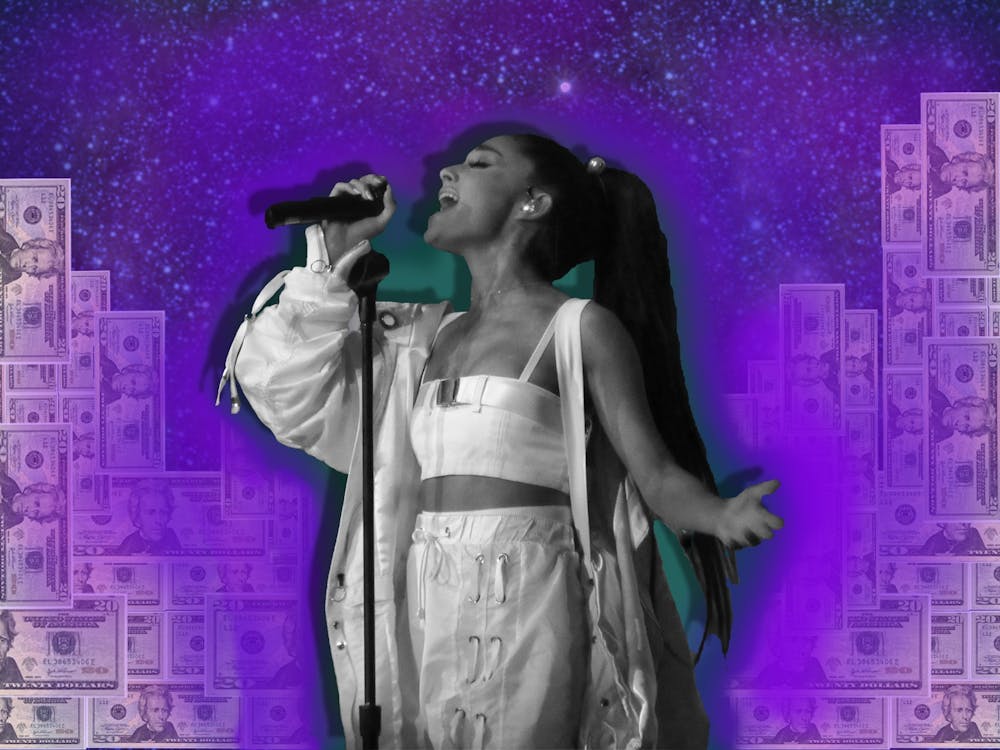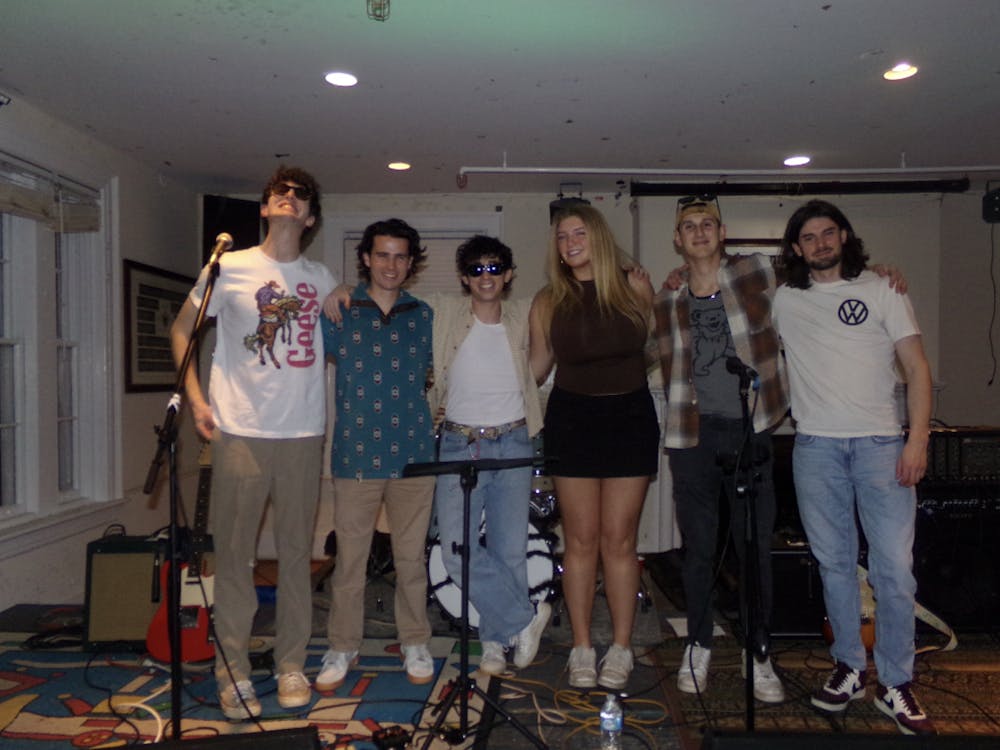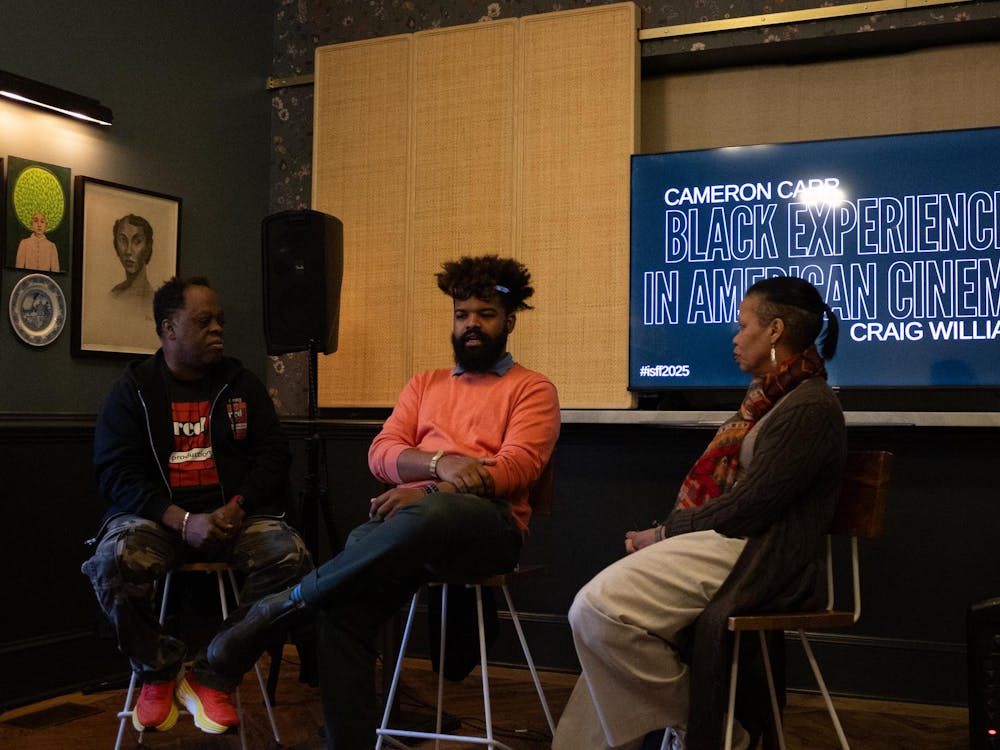It seems as though America knows everything about Ariana Grande, from her PTSD after a terrorist attack at a 2017 Manchester show to her highly publicized breakup with comedian Pete Davidson. The one thing the public has yet to figure out? Her race.
The question of Grande’s race is brought about by her presentation as racially ambiguous. Grande is Italian-American, but her deep complexion — which is a result of tanning — leads many to think otherwise. She was even criticized for her dark appearance on the August 2019 Vogue cover.
The problem stemming from her racial ambiguity is the impact it has on her career — the perception of Grande as racially indeterminate allows her to make both pop and R&B music and may contribute to her success as a pop star.
Even though the “thank u, next” singer’s career has spanned less than a decade, she has managed to amass a wild amount of success. She has been most successful within the last two years of her career with the release of her more R&B and hip-hop oriented albums, 2018’s “Sweetener” and “thank u, next” from 2019. Grande has always been vocal about her appreciation of R&B and hip-hop music — her debut album featured production credits from Babyface, and she cites Mariah Carey, Whitney Houston and Brandy as some of her musical inspirations. However, as Grande’s interest in a more urban sound increased, her complexion concurrently deepened, making her appear more racially ambiguous over the years.
Grande’s racial ambiguity has been noticed by fans and scholars alike. Jack Hamilton, an assistant professor in the department of Media Studies and Slate pop critic, explained his thoughts on the phenomenon.
When asked if he thought presenting as racially ambiguous was a conscious decision, Hamilton said, “[with] the rise of social media … you are able to see artists have a little bit more agency in terms of how they are presenting, how they’re identifying, what types of audiences they’re trying to get their music in front of.”
Regarding Grande specifically he commented, “it’s a little bit more complicated because of her background as basically a child star,” Hamilton said. “Usually with artists when someone breaks into the music industry at a very young age, [they have] a lot less sort of control and say over how they are being marketed.”
The fixation America has with ethnically ambiguous performers is not new. Throughout history, artists such as Grande, Justin Timberlake and Christina Aguilera have achieved success with their ability to cross genres like pop and R&B because of their racial presentation.
“There’s this ... standing sort of cultural interest, if not sort of fascination … fetishization of the ethnically ambiguous performer,” Hamilton said.
Hamilton said that while the music industry is becoming more open to non-black artists participating in genres traditionally considered black, this participation must be done with respect.
“People will respect you and appreciate you [as an artist] if they feel like that’s a mutual thing… if you’re bringing a level of respect and a level of appreciation and a level of kind of love and reverence to the music you’re making,” Hamilton said.
The problem with an artist such as Grande making R&B music is her transition towards this sound coincided with a darker complexion.
“It’s ‘tradition’ in American pop music to have these young, white, teenage stars who are making black-influenced music,” Hamilton said.
While Hamilton noted that Grande’s transition to R&B music has been “smoother” than some of her predecessors and contemporaries, he said that as long as Grande presents herself as ethnically ambiguous, her participation in this genre of music is inherently problematic.
Grande’s transition from child to adult star began in 2016 with the release of her third studio album, “Dangerous Woman” — her first true exploration of hip-hop and R&B music. Between the release of her second and third albums, her sound, complexion and lyrical content changed. She experimented with trap beats and worked with artists such as Macy Gray, Future and Nicki Minaj. During the “Dangerous Woman” era, many were quick to point out that she was nearly the same complexion as Nicki Minaj in their performances together, and her lyrical content became more sexually explicit.
This transition to more promiscuous lyrics and a traditionally black sound coinciding with a racially ambiguous complexion is troublesome, because it perpetuates ideas that black musicians only making vulgar or provocative art, and that women of color are inherently sexual.
Artists who present as racially ambiguous are not only afforded the ability to make such musical transitions, but also the fluidity to revert to pop music. Artists of color, on the other hand, may be pigeonholed into making music that is stereotypically associated with their race.
“There’s a lot more fluidity in terms of these sort of boundary-crossing things that are afforded to white artists,” Hamilton said.
Grande is a prime example of how white artists who present as racially ambiguous are afforded genre fluidity. Upon the release of her 2019 single “7 Rings,” many publications were quick to proclaim Grande a rapper on the song without also taking away her status as a singer. Contrastingly, Lizzo came under fire in August of 2019 for comparing herself with rappers Future and Swae Lee.
“For African American artists in particular in this country, there’s a real sort of confinement to what audiences think of as being ... what black music is versus white music,” Hamilton said.
Lizzo not being labeled both a rapper and singer, while Grande is hailed as both, highlights the freedom that presenting as racially ambiguous affords Grande and the constraints placed on women of color in the music industry.
However, while Grande is not without fault in presenting herself as racially ambiguous in a way that helps her career, one should consider the role misogyny plays in how her ambiguity is perceived.
Citing Justin Timberlake as an example of this, Hamilton said “he [Timberlake] was really celebrated for [his transition from pop to R&B music]. He didn’t get the same amount of flack.”
How the music industry should address the issue of racial ambiguity — and the profits artists make from it — is a layered question.
“[It] is not about the ambiguity aspect,” Hamilton said. “It’s about the profiting from it, and it’s about the exploiting it.”
Hamilton is right. Grande’s darker presentation is not done maliciously. Regardless, she still reaps profits from being white and presenting as ethnically indeterminate. There is a long history of white artists profiting from the sounds and styles of black artists in the music industry.
This history cannot be undone with just Grande alone — she is just one of many. But it can start with her using her platform.
One solution Hamilton suggests is “[artists] making more space to have open and honest conversations about the way that race and economics works in the music industry.”
As one of the biggest stars in the music industry, what Grande has to say matters. Perhaps it’s a pipe dream in such a highly political industry, but if Grande were to openly address the issue, the music industry would be one step closer to a level playing field for artists of color — and there would be one less problem with racial ambiguity.







